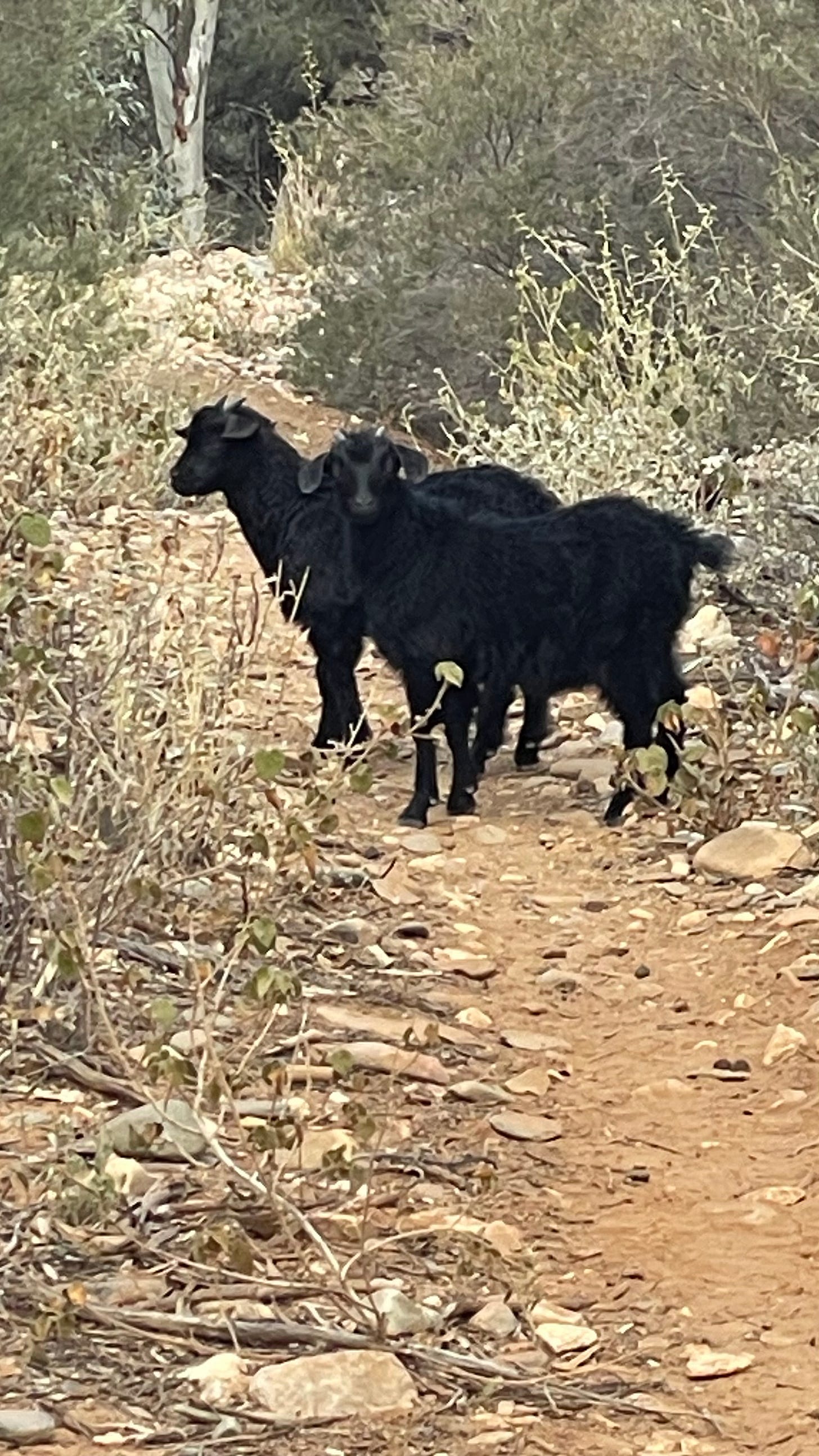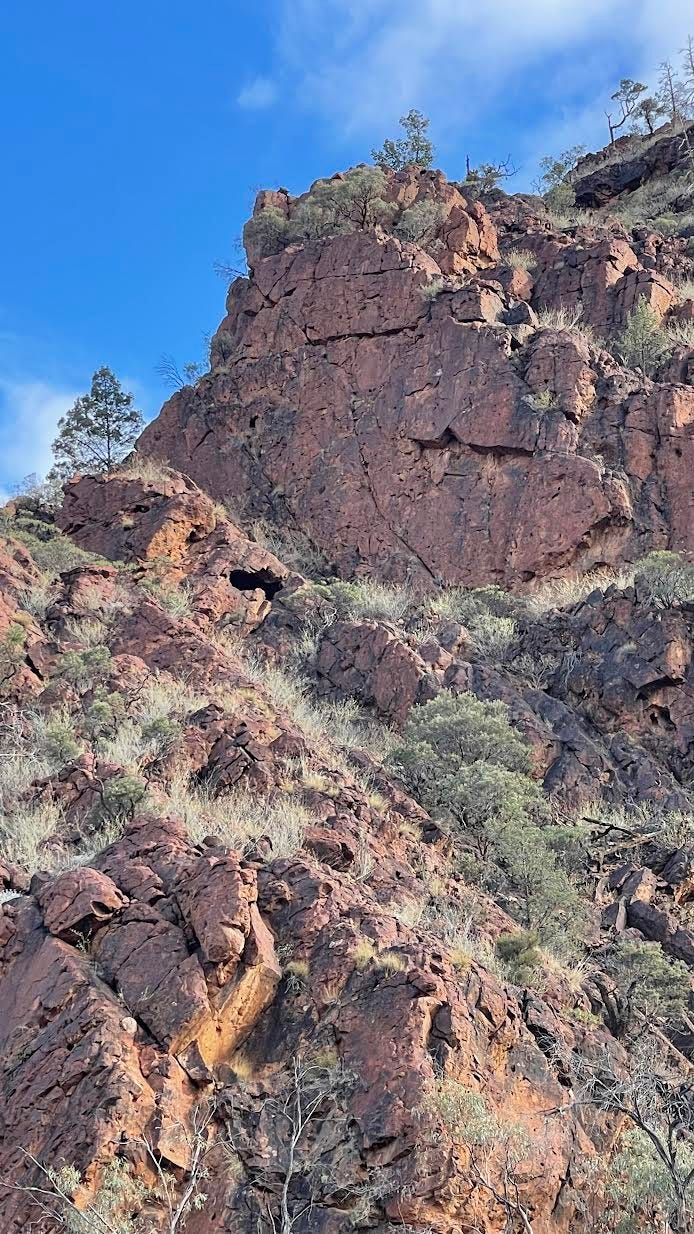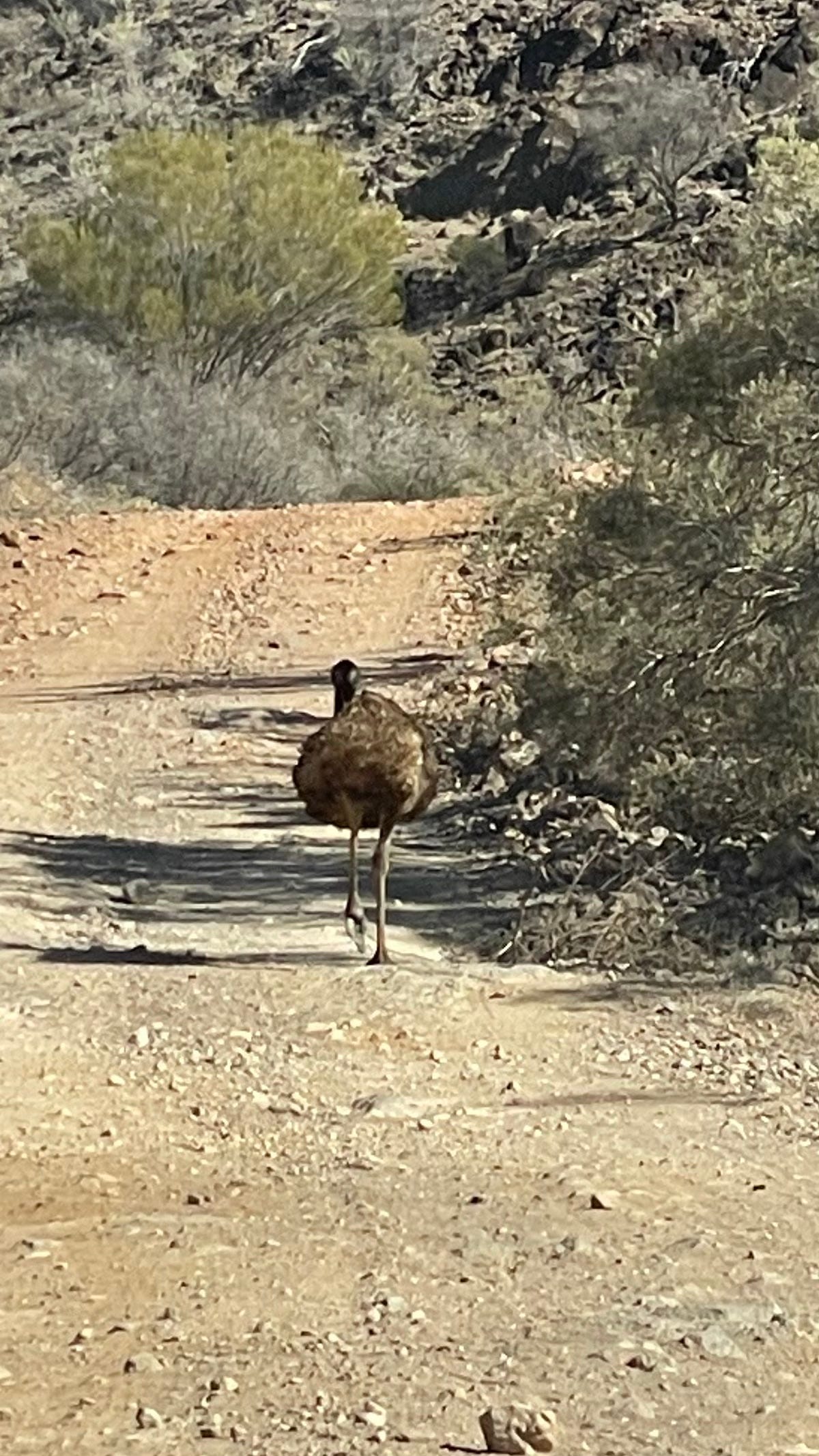Geological Wonders
Vulkathunya- Gammon Ranges, Lake Frome, Chambers and Wilkawillena Gorges.
Over the years I’ve explored a lot of the Flinders Ranges in South Australia. This year, new places and some old favourites, all on the less-visited outer northern and eastern edge of the Ranges. My first stop is Weetootla , a camp by Balcanoona Creek. Its an impressive entrance to the Gammon Ranges in the north. Towering jagged rocky cliffs, huge upheavals, splitting and folding over time. Deep browns and reds. Golden when the sun strikes them. All interposed between rocky creeks, boulders and pebbles worn down over time.
As I walk down through the Gorge here, there’s emus scattering and a pair of black kids following me with pitiful bleating. I hope their mother hasn’t been exterminated. The policy is to remove all feral animals – goats, feral cats, and foxes from National Parks.
The sheer rocks in the Gorge have been sliced through as though with a cheese knife. Tillites line the lower walls – formed when boulders, huge and small cascaded into the silt and mud of the river bed and formed rocks themselves with the original rocks embedded within, as the earth rose and twisted 700 million years ago, the oldest rocks in the Park. 700 million years ago –incomprehensible! I set up my campfire by the dry rocky creek. Emus wander by and I listen to the contented chirping as the smaller birds settle in the huge river gums nearby as the sun sets.
Next day I visit the old station, another station purchased by Parks when it was no longer viable. The beautifully crafted limestone buildings and water tanks tell of another time, the 1800s, when the landowners were the wealthy.
From there I spotted the track to Lake Frome, a huge salt-lake on the edge of the ‘bad lands’ - land that was never considered arable. The track is good but fraught with the hundreds of Euros and Northern Grey kangaroos trying to break through the old station fence as I drive along the boundary. Some go under, some ricochet back, and some sensibly go in the opposite direction. All survive on my watch. Not so lucky an emu, dead, now a ball of disintegrating fluff, but still hanging from the fence from when its leg became trapped in the wires. The lake is remarkable, where it rarely rains, and as far as the eye can see, crispy, crunchy clay with salt sprinkles on top. Too pristine to walk out further where the salt-crust looks thicker.
Later, I drive up to Grindell’s Hut deep in the Park through rolling hills, gorges, crests, ridges, steep edges, and river crossings - all dry. The whole park is in drought. Luckily, I pass no other vehicles. Sight is limited. It would be tricky to manoeuvre. In fact , I haven’t seen another person since I’ve been in the Park. But, so many emus. When they hear a vehicle, they take the path of least resistance – the road. They, in groups of three or six or even a dozen, keep running in front of the vehicle, backsides wobbling, until they reach the point of exhaustion. One young fellow trips in front of me, flopping to the ground. His family veer off into the scrub. He thankfully staggers to his feet but keeps blindly running, under huge stress. Eventually, the only solution is to speed up along side him as he tires, and steer him into the scrub. Emu wrangling – my new skill.
Another iconic dry creek camp lined with river gums. Nearby, Grindell’s Hut has been restored by parks for overnight bookings. Built in 1918 for the property owner, it fell into disrepair when the owner was sentenced to life imprisonment for murdering his son-in-law who was his neighbour. I feel no bad vibes. Late afternoon, five vehicles with young fellows turn up, checking out the camp site, as they suck on their tinnies and listen to their ‘durf, durf’ music. Not good vibes now. Luckily, they decide to move on.
The next day I head to Arkaroola Eco Resort for internet , a shower, a restaurant meal and maybe some company. Of course, although I’m not planning to explore their extensive tracks this trip, I can’t resist watching the yellow-footed wallabies coming down to the camp in the evening for a snack and drink, part of the restoration project as their numbers have depleted substantially from drought. Arkaroola has had only six millilitres of rain this year back in March. It is now the beginning of July.
I head South to an old favourite – Chambers Gorge. It was a favourite of the indigenous people too. One section of the gorge is inscribed with petroglyphs. The symbols have been chipped out on rock with rock. Mt Chambers rears above my camp site. I walk down the dry river bed. It is so incredibly dry. There is not a puddle of water anywhere. I hear no birds, I see no kangaroos. When I walk to the amphitheatre at the end of the gorge I do see several flocks of goats though. They are almost indestructible.
Onward to Wilkiwillena Gorge. Last time I was here the rocks in the river were a magical display of colourful tillites. Not so this time. There has obviously been a flood earlier in the year. The whole river-bed is coved in brittle clay but a few pools of water remain near some bigger boulders. No interesting rocks, but so many birds, even a flock of native ducks. And rising from the dry clay are hundreds of new eucalypts, the sun shining through the young tips colouring them red and orange. I’m not sure how they will fare when the next flood sweeps through.
As I return from my walk at the end of the day, I see four ‘Darth Vader’ figures - definitely with helmets - silhouetted on the rise near my camp. I approach cautiously, with my rock hammer lightly by my side. As I near, they climb on their motorbikes and roar off.
I camp alone, high above the gorge. As the sun sets I am treated to the most magnificent sunset, varying in light and colour and cloud patterns in a 360-degree arc around me. It just keeps on giving for almost an hour. I think it is the most impressive sunset for colour, variety and length that I have ever seen. I swear it could be a Hans Heysen painting. He is the iconic artist of this area. What a wonderful finale to my time in these Ranges.
The sunset clouds are prophetic. During the night the wind comes up … strongly. The Troopie, positioned on the cliff edge, shudders in the gale. At dawn the sky fires an angry red. The dust swirls. It could be Armageddon. I throw everything in the van. The doors strain to break free in the gusts. I seek shelter. It is definitely time to head North.

















An amazing picture you have created. Good times.
Such a treat reading about your experiences adventures